TUFLOW Remapping
Introduction
With the release of TUFLOW 2020, the combination of Quadtree mesh and Sub-grid Sampling (SGS) method has offered great flexibility to build a model with a range of mesh sizes. SGS samples the digital elevation model (DEM) at a number of points within a cell and computing the water surface elevation as a function of cell stored volume. With SGS, cells and faces can be considered as "partially wet", and this means the impact of the sub-grid scale geometry can be represented by cells with larger sizes. The example below shows a Quadtree model with 10/20m cell size can conduct water as smoothly as a 2.5/5/10/20m model along a narrow stream.
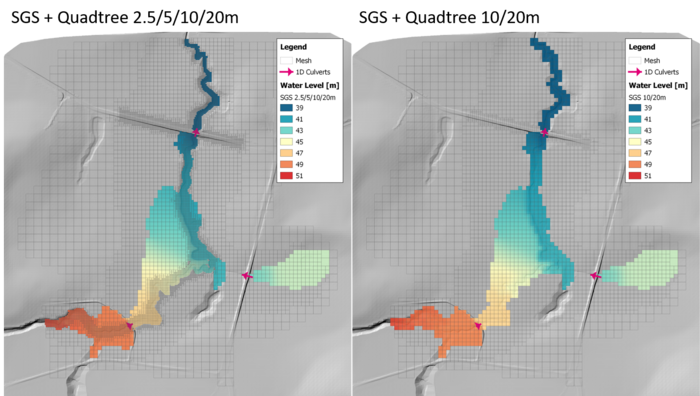
Figure 1 Water level simulation results with SGS. Left: 2.5/5/10/20m Quadtree model. Right: 10/20m Quadtree model.
On the other hand, the same model running without SGS method creates notably different results in the distance of water travelled and the area of inundation on floodplain due to the poor geometry representation.
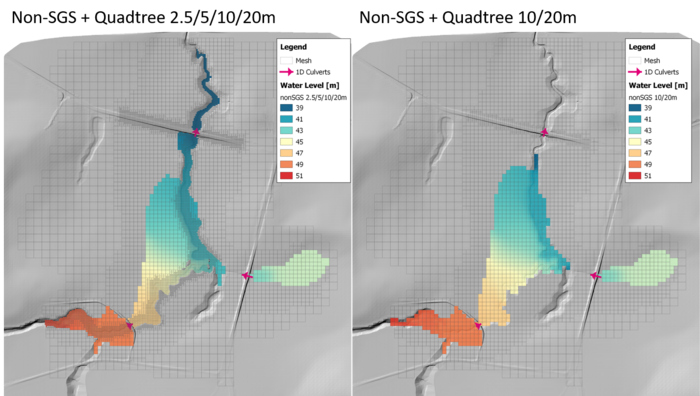
Figure 2 Water level simulation results without SGS. Left: 2.5/5/10/20m Quadtree model. Right: 10/20m Quadtree model.
These examples indicate the mesh size sensitivities of a SGS model are significantly reduced, and thus modellers are increasingly using coarser mesh at areas far away from the location of interest. However, this has also create a challenge for how to output water depth at those coarser cells. The example below shows even the 10/20m mesh and the 2.5/5/10/20m mesh models produce similar water level, but the depth map output is much 'smoother'in the model with finer meshes.
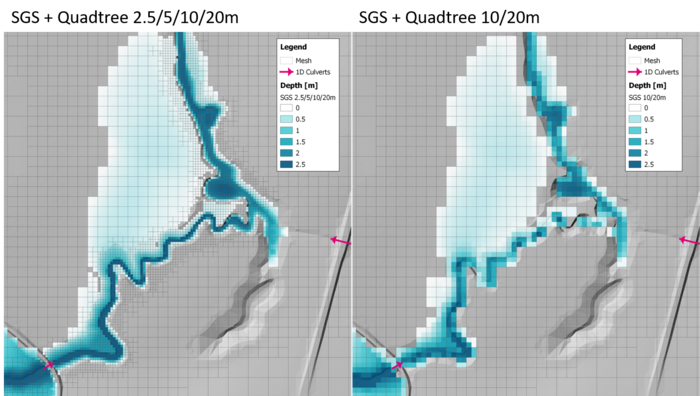
Figure 3 Water depth simulation results with SGS. Left: 2.5/5/10/20m Quadtree model. Right: 10/20m Quadtree model.
In TUFLOW, the depth output is interpolated from the depths at nearest cell centre and cell corners surrounding the output grid. The interpolated depth may not perfectly represent the actual depth, since TUFLOW doesn't store the under laying high resolution DEM values at the moment.
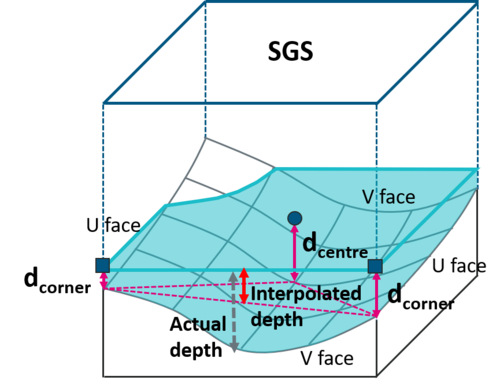
Figure 4 TIN interpolation used for water depth map output with SGS.
While we are developing high resolution SGS output in the future release to address this issue, we have also added a new functionality in the ASC_to_ASC utility to 'remap' a water level grid to a finer DEM grid. This page introduce how to use the ASC_to_ASC remap function, and also discuss the limitation of the method.
Remap Water Level to Finer DEM
The remap function in the ASC_to_ASC remaps a water level grid to a high resolution DEM using TIN interpolation. It outputs a high resolution water level grid and a high resolution depth grid.
asc_to_asc.exe -remap -wl lowres_h.asc -dem DEM_highres.asc
In this command:
"-wl <wl_file>"
Sets the coarser resolution water level grid to remap from.
"-dem <dem_file>"
Sets the finer resolution DEM.
The figure below overlays the remapped water depth on top of the 10/20m model water level output, and compared it to the original water depth output. As can be seen, smooth water depth along the gully and flood fringes is produced by the post process utility.
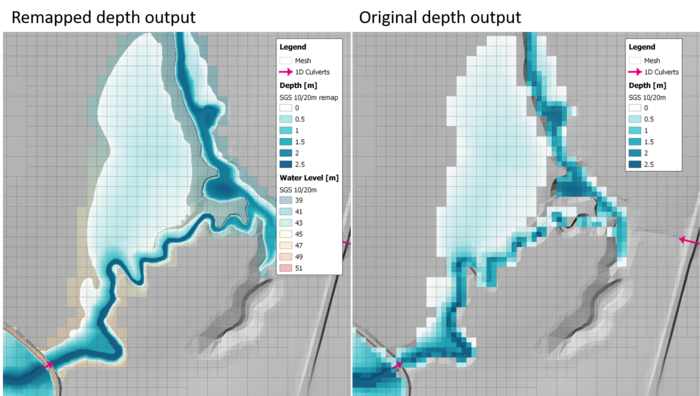
Figure 5 Remapped vs original water depth for 10/20m mesh SGS model.
The next example presents the water level output and the remapped depth output in a river flood modelling. As can be seen, large portions of small buildings are submerged by water level output due to the relative size of the mesh and the buildings. However, remapped depth shows smooth fringes around the buildings.
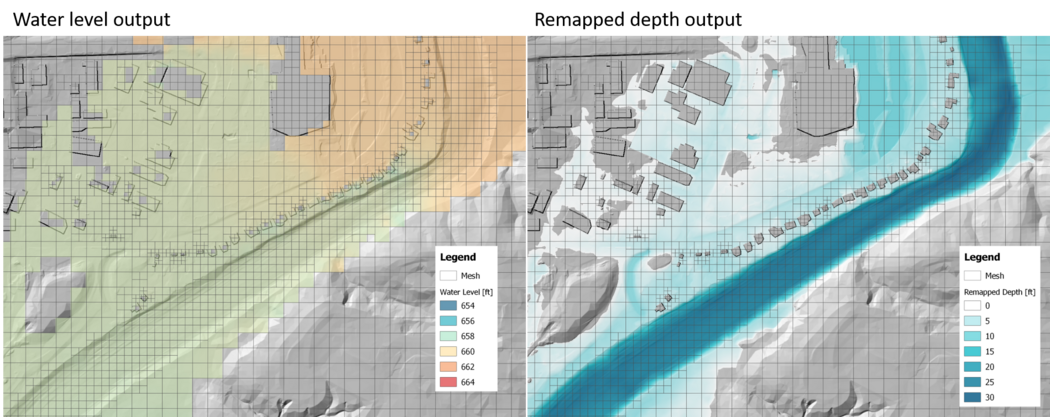
Figure 6 Water level output and remapped water depth in a river flood model.
Remap Other Output Grids
The utility can also remap extra grid files (e.g. a hazard output) to the resolution of the DEM file.
asc_to_asc.exe -remap -wl lowres_h.asc -dem DEM_highres.asc lowers_hazard.asc
This command reads in an extra grid 'lowers_hazard.asc' and remaps it to the finder DEM resolution.The figure below compares the original hazard output from the 10/20m SGS model and the remapped hazard output.
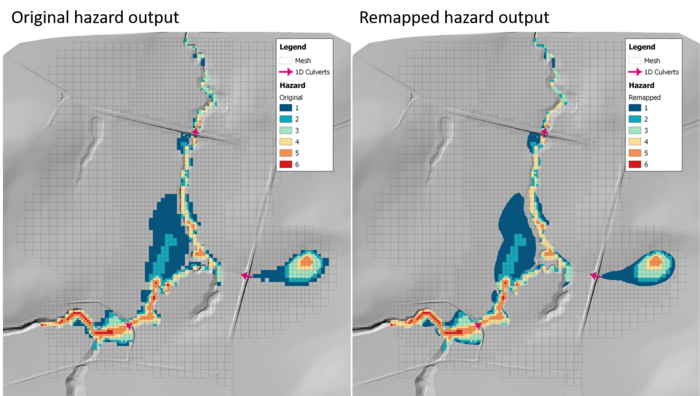
Figure 7 Remapped vs original hazard output for 10/20m mesh SGS model.
It is important to note that, for output types other than depth, this utility does NOT interpolate the result from the coarser grid to the finer grid, but only extended/reduced the output extent to the dry/wet extent. Therefore, the resolution of the remapped hazard above remains the same as the original output grid. The interpolation is not conducted for the following reasons:
- Hazard categories are usually depended on both water depth and velocity, and it is not straight forward to interpolate a cell averaged velocity to sub-cell scale with varying water depth.
- Even if this can be done based on empirical relationship between depth and velocity, the obtained velocity is much less reliable than a actual output from a model with finer mesh.
Therefore, we highly recommend refining the mesh size directly a the location where user wants to obtain finer velocity or hazard output. The figure below shows the hazard output from the 2.5/5/10/20m model, and as can be seen the result is much smoother along the gully.
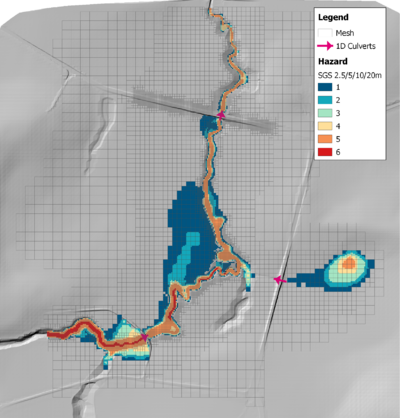
Figure 8 Original hazard output for 2.5/5/10/20m mesh SGS model.
Model Mesh Size vs Remap Result
Beside the quality of hazard output discussed above, the model mesh size can still impact the remapped output in the following situations.
Road Crest
At location with steep slope, typically when water flows over a road crest, the remapped water depth may become negative if the output grid size is too large. The figure below shows the remapped depth over a road crest from models with different mesh sizes. As can be seen, some area doesn't have remapped output despite the water is clearly over-topping the road.
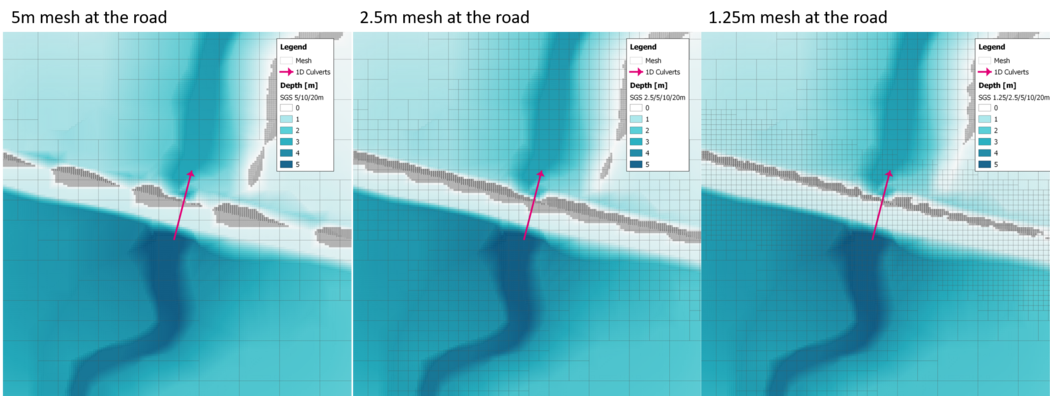
Figure 9 Remapped depth over a road crest from different mesh size models.
As illustrated in the figure below, the DEM has mush smaller resolution and the elevation changes rapidly over the road crest, when interpolation the coarser water level to the finer DEM, the interpolated water level may become lower than the DEM level, due to the difference in grid resolution. In the actual simulation, this type of location treated as 'weir flow' and proper depth is used. This issue will be further addressed in the high resolution SGS output scheduled in the future release.
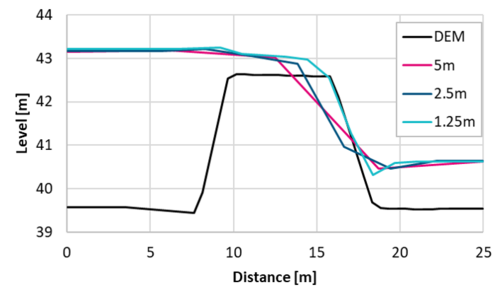
Figure 10 Modelled water level line over the road crest.
Upstream Catchment
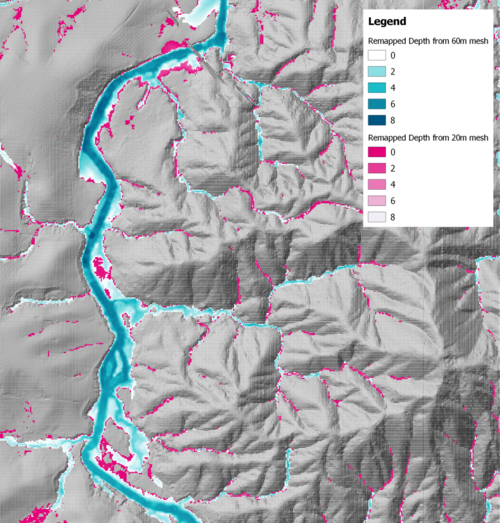
Figure 11 Remapped depth at upstream catchment from different mesh size models..
Conclusion
When the spatial resolution of a model is increased (i.e. cell size reduced) review of result sensitivity at 1D/2D SX link locations is recommended. This can be done quickly and easily by plotting 1D results and checking for unwanted oscillations. This page demonstrated some useful methods for stabilising 1D/2D boundary (SX) links, in particular where the 1D structure is large in comparison to the 2D cell size. Available options that were introduced included reviewing the 1D timestep, using 1D nodes to define the 1D/2D boundary link, SX boundary lines, SX storage factors and SX boundary polygons.